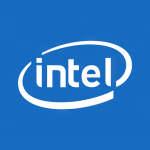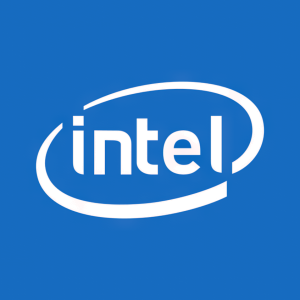Welcome to our dedicated page for Intel news (Ticker: INTC), a resource for investors and traders seeking the latest updates and insights on Intel stock.
Intel Corporation (INTC), the global leader in semiconductor innovation, maintains this dedicated news hub for investors and technology professionals. Access official press releases, financial announcements, and strategic updates directly from the company driving computing advancements worldwide.
This comprehensive resource aggregates Intel's latest developments across key operational areas including processor innovations, manufacturing expansions, and strategic partnerships. Users will find verified information on quarterly earnings, product launches, and technology breakthroughs - all essential for understanding the company's market position.
The curated collection includes updates on data center solutions, AI chip development, foundry services expansion, and sustainability initiatives. Bookmark this page to monitor Intel's progress in advancing semiconductor technology while maintaining awareness of industry-shaping developments.
ConsenSys Health is leveraging Intel technology to enhance clinical trial recruitment through a blockchain-based approach that prioritizes patient privacy and accessibility. This initiative aligns with the World Health Organization's report on AI in healthcare, aiming to address inequities amplified by the COVID-19 pandemic. By utilizing Intel's Elevated Compute platform and federated computing, ConsenSys Health can expedite patient matching and improve trial participation, ultimately advancing healthcare solutions more equitably.
Intel (Nasdaq: INTC) is expanding its AI for Workforce Program to 18 community colleges across 11 U.S. states. The initiative aims to train students in artificial intelligence, addressing the growing demand for AI skills in various fields. In partnership with Dell Technologies, the program will provide technical support and curriculum focused on AI concepts, ethics, and real-world applications. The expansion is expected to reach approximately 800,000 students. Intel plans to further grow this initiative with additional colleges in 2022.
Intel Corporation unveiled a detailed process and packaging technology roadmap, featuring innovations that will influence products through 2025 and beyond. Key announcements include the new RibbonFET transistor architecture and PowerVia for backside power delivery. The company aims for swift adoption of next-generation High Numerical Aperture EUV lithography, with the first production tool expected to be received soon. Additionally, Intel's new naming structure for process nodes provides clarity, particularly beneficial for Intel Foundry Services. The roadmap also highlights performance improvements across various technology nodes.
Intel and Airtel Partnership: Intel has teamed up with Airtel to develop cutting-edge 4G and 5G virtualized radio access networks (vRAN) in India. This collaboration aims to enhance Airtel's infrastructure for over 345 million subscribers, optimizing services using Intel's technology, including Xeon processors and FlexRAN software. India’s growing digital landscape, with an estimated internet user base of 900 million by 2025, emphasizes the need for scalable networks. Both companies plan to innovate within the O-RAN Alliance to support India’s 5G ambitions.
Intel Corporation announced the election of Andrea Goldsmith to its board of directors, effective September 1, 2021. Goldsmith is the dean of engineering at Princeton University and has over two decades of experience at Stanford. She has co-founded two technology companies and serves on the boards of Medtronic and Crown Castle. Her expertise in wireless communications, particularly 5G technology, is expected to bring valuable insights to Intel. This addition increases board diversity, with 40% women and 30% racially or ethnically diverse members.
Intel has declared a quarterly dividend of $0.3475 per share, amounting to $1.39 annually. This dividend is set to be paid on September 1, 2021, to shareholders who are on record by August 7, 2021. The announcement highlights Intel's commitment to rewarding its investors while continuing to innovate in semiconductor technology. As a major player in the industry, Intel aims to advance the design and manufacturing of semiconductors to tackle global challenges and drive progress.
At the 2021 International Supercomputing Conference, Intel showcases its advances in high-performance computing (HPC), highlighting the 3rd Gen Xeon processors that deliver up to 53% higher performance across HPC workloads. Intel's partners include Dell Technologies and HPE, and significant gains in AI and memory capabilities are noted with the upcoming Sapphire Rapids processors featuring integrated High Bandwidth Memory. The Xe-HPC GPU (Ponte Vecchio) is also introduced, aiming to enhance HPC and AI workloads. Additionally, Intel announces commercial support for DAOS, optimizing data exchange across HPC architectures.
Parallel Wireless has been chosen by Axiata Group as a strategic partner to implement O-RAN networks for digital telcos in Southeast and South Asia, enhancing both 2G and 4G broadband connectivity. The trial involved replacing existing infrastructure with Open RAN solutions during Covid-19 restrictions, successfully demonstrating quality network performance. Axiata aims for commercial deployment by Q4 2021. This collaboration will utilize a cloud-native architecture and improve service agility while lowering costs for Axiata's operations.
Intel and Microsoft have enhanced their partnership to deliver a reimagined computing experience with Windows 11. The collaboration targets over 75% of Windows PCs, powered by Intel processors. Innovations include Intel Bridge Technology that enhances mobile app compatibility on PCs, ensuring optimal performance and user experiences. Intel has pre-verified over 80 Windows-based Intel Evo platforms from major manufacturers, aiming for a broad range of computing experiences for users.
Intel has announced significant changes to its executive leadership team, with two new technology leaders joining and existing executives taking on new roles. Sandra Rivera becomes executive vice president and general manager of Datacenter and AI, while Nick McKeown will lead the newly formed Network and Edge Group. Greg Lavender joins as CTO and heads the Software and Advanced Technology Group, and Raja Koduri will lead the Accelerated Computing Systems and Graphics Group. These moves aim to accelerate innovation and focus on key growth areas.


